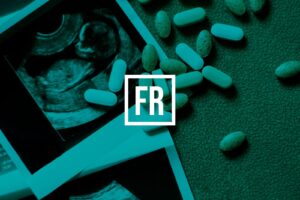The prognosis of patients under the age of 40 who undergo PRP can be improved. It is important to note that the aim is to increase the number of eggs because the technique does not increase the quality of the eggs.
Dr. Ana Fuentes, head of the Low Ovarian Reserve Unit at the Bernabeu Institute, explains that PRP is a treatment with which the clinic has already had a year and a half’s experience treating patients with a low response. “We indicate it if we think it can improve their prognosis and if there are no contraindications.
The doctor warns that up to 20% of the cycles may have a low response, and it is a part of them to whom PRP is administered, not all of them. It is part of the complementary treatments along with other low-response strategies.
The technique “awakens” dormant follicles and makes it possible to obtain eggs that cannot be obtained with conventional ovarian stimulation.
In patients over 40 years of age, experts do not recommend PRP, warning that it is not advisable. This is because, from the age of 40 onwards, more oocytes are needed to improve the prognosis. It is important to note that in women over 40, the quality of the eggs obtained is not improved because the oocytes correspond to the patient’s age.
On the other hand, for a woman of around 35 years of age, the difference between obtaining 2 more oocytes is very important and can change the outcome of the treatment.
The fame that PRP has acquired means that some patients want to have this treatment but have no need for activation. “There are patients who want PRP without needing it,” explains Dr. Fuentes.
PRP is a treatment that is performed in conjunction with other strategies. It is also being applied in cases of ovarian failure, to see if in these very specific cases it is possible to activate follicles. It is a treatment that has hardly any contraindications and is simple.
IVF PRP success stories
No relevant medical history, a 33-year-old female
A 33-year-old female patient with no relevant history comes to us interested in the vitrification of oocytes for preservation. She has no partner.
- The study shows low ovarian reserve markers. Antimüllerian hormone (AMH) 0.4 ngml (normal 1 ng/ml). Antral follicle count (AFR): 3+2.
- Ovarian stimulation is performed with 300 ui of recombinant FSH: growth of two follicles, a mature oocyte is obtained which is vitrified. Intraovarian PRP is administered on the day of the puncture.
- New stimulation is performed in the second post-PRP cycle with the same protocol: 4 follicles grow and 4 oocytes are obtained.
Female 40 years old with a 43-year-old partner
Female 40 years old and male 43 years old. Looking for pregnancy for two years and IVF failure due to low ovarian response.
- Male normal sperm analysis.
- Female: AMH 0.5 ng/ml. Low antral follicle count: 2+1. Previous response to ovarian stimulation: 1st response of a single follicle reconverts to insemination. 2nd 3 oocytes, transfer of an embryo on day 3, no pregnancy.
- Ovarian stimulation is performed in our clinic: administration of androgens in the previous cycle, and stimulation with recombinant FSH and hMG, in antagonist protocol. Growth of two follicles. Two mature oocytes are obtained and an embryo is obtained on day 5, which undergoes an embryo biopsy, resulting in a non-transferable aneuploid embryo.
- After oocyte retrieval, intraovarian PRP is administered.
- A new stimulation similar to the previous one is performed without previous androgens in the cycle after PRP: 5 mature oocytes are obtained and 3 embryos are obtained on day 5. After the biopsy, none of them are genetically normal for transfer.
- A double stimulation cycle is performed (2 cycles after PRP): obtaining 7 and 6 mature oocytes, resulting in 7 embryos on day 5: they are biopsied and none of them is genetically normal.
This case shows an improvement in the quantity of oocytes without improving the quality but allowed us to analyse a greater number of embryos.
The couple – 39 years old woman and her 45 years old partner
- Normal sperm analysis.
- They have been looking for pregnancy for 3 years.
- She has very low ovarian reserve markers with the absence of menstruation for some months (signs of ovarian failure). AMH 0.02 ng and RFA: 0.
- The history of previous stimulation cancelled due to non-response in another clinic.
- She wanted to try a new stimulation and intraovarian PRP was administered prior to stimulation.
- After a post-PRP cycle, gentle stimulation is performed with 150 IU of FSH and two follicles grow, two oocytes are obtained, one mature oocyte which is vitrified.
- A second stimulation is performed and a follicle grows. Another mature oocyte is obtained.
- Both oocytes fertilise resulting in two embryos, pending transfer.
In general, we have observed (preliminary data) improvement in response, between 1-2 more oocytes in post-PRP cycles, mainly in patients younger than 40. In patients over 40 the prognosis does not improve because many more oocytes are needed. We must still be cautious with these results.
Use of platelet-rich plasma (PRP) in low ovarian reserve
Low ovarian reserve means a lower probability of spontaneous conceiving, as well as a decrease in the number of eggs obtained in ovarian stimulation treatments. At Instituto Bernabeu, the low ovarian reserve unit works to develop individualized stimulation protocols for this type of patient, together with pharmacogenetic studies (which determine the most appropriate medication according to the genes involved in ovarian response) and technological advances in the laboratory, which make it possible to accumulate eggs in several cycles of stimulation.
However, we know that there’s an endowment of “residual dormant follicles” that cannot be activated with the drugs used during stimulation. Some research suggests that intraovarian administration of platelet-rich plasma (PRP) can activate the ovary (“ovarian rejuvenation“), increasing the number of eggs obtained and reporting cases of spontaneous pregnancies and after in vitro fertilization.
What are the platelet-rich plasma (PRP) and growth factors?
It’s a portion of the patient’s own plasma with a high concentration of platelets. It’s obtained after separating the components of a blood sample, in a process known as centrifugation. Platelets release a large number of growth factors, which promote the repair and regeneration of different tissues.
How can you promote ovarian response and “ovarian rejuvenation”?
Development of follicles in very early stages depends on different growth factors, so the administration of PRP directly in the ovary, would increase their concentration and favour the activation of “sleeping follicles”
What does the IVF treatment with PRP consist of?
After obtaining a blood sample from the patient, as in simple analysis, the PRP obtained is introduced into both ovaries by transvaginal puncture under sedation, without requiring hospitalization. It can be administered in the same procedure in which the eggs are extracted, and in patients who are going to undergo subsequent stimulations.
After the procedure, the patients will continue with the prescribed ovarian stimulation treatment or the corresponding follow-up. Because the patient’s own blood is used, there is no risk of rejection.
PRP and growth factors, are they indicated for all patients with low ovarian reserve?
It’s an experimental treatment, with promising results, and in which the medical team must assess the appropriateness of its performance in each case, evaluating the chances of success or improvement in the ovarian response. On the other hand, we must bear in mind that no available treatment will improve oocyte quality, mainly depending on age.
Use of platelet-rich growth factor (PRP) in implantation failure and thin endometrium
Despite advances in the treatment of reproductive disorders, embryo implantation is still far from being fully understood and, therefore, an effective treatment is not always at reach. At Instituto Bernabeu, we are fully aware of repeated implantation failures after the transfer of embryos morphologically classified as good quality and chromosomally normal, which constitute a frustrating situation for both the couple and the specialist.
How can the use of platelets help?
On the other hand, we know that platelets, small disc-shaped fragments found in the blood, are known to be an important part of the clotting process. But in addition, platelets also play an important role in the repair and regeneration of different tissues. After any damage to tissues or blood vessels, a platelet activation process begins with the secretion of a great variety of molecules such as platelet growth factors that intervene by accelerating and favouring the tissue repair and regeneration process.
The technique is based on obtaining the patient’s plasma concentrated or enriched in her own platelets (Platelet-Rich Plasma or PRP) and, therefore, without the risk of allergic responses or rejection. The therapeutic use of these platelet factors in fields such as traumatology, dentistry, podiatry or aesthetic medicine is already known due to their regenerative capacity.
This technique could be consolidated as a new strategy for the improvement of the results in carefully selected cases by the reproductive medicine specialist. We consider it important to point out that PRP is considered a drug by the Spanish Medicines Agency and as such, it must be prescribed by a doctor and applied in a healthcare context, guaranteeing all appropriate safety measures.






